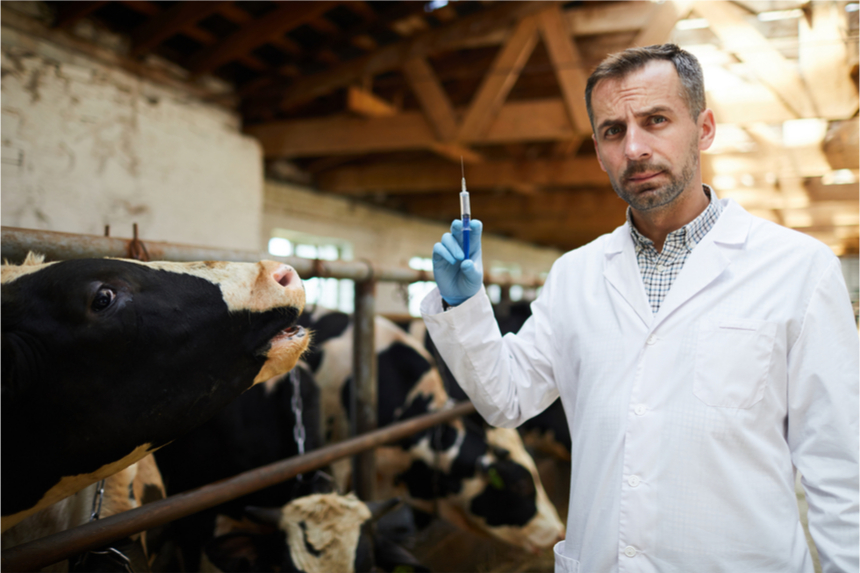Managing editor and logophile Andy Hollandbeck reveals the sometimes surprising roots of common English words and phrases. Remember: Etymology tells us where a word comes from, but not what it means today.
Every year, autumn brings with it many things: cooler temperatures, large bags of “fun size” Halloween candy, pumpkin-spiced everything, and constant reminders to get your flu shot. That “shot,” of course, is the latest influenza vaccine, a word that emerged from the cattle fields of 18th-century Gloucestershire, England. But the story of vaccine starts before that, with smallpox.
Smallpox coexisted with humanity for thousands of years. As human populations in Europe, Asia, and Africa grew, and travel for trade and crusade became more prevalent, smallpox grew and traveled along with us, killing nearly a third of those it infected. In western medicine, the smallpox virus was called variola (after the Latin word for “pustule,” pustules being the most visible symptom of smallpox), and by the 17th century, the only known protection against smallpox was, ironically, intentionally infecting a healthy person with the Variola virus. The process, called variolation, would often enough result in a mild case of smallpox followed by lifetime immunity, but sometimes it led to full-blown smallpox and, for around 2 percent of those inoculated, death.
Still, it was the best possible treatment against the disease that western doctors had to offer. That is, until Edward Jenner got involved.
Edward Jenner was a surgeon and anatomist in Gloucestershire, England. Since he was a boy, he had been told that milkmaids never got smallpox, but no one knew exactly why. Dairy farmers, too, seemed to be immune to smallpox, and, observation by observation, Jenner and others began to deduce a common connection: cowpox.
Cowpox was a much rarer and milder disease that was passed from bovine to human through sores on a cow’s udder. A cowpox infection resulted in much less scarring and seldom ended in death; what’s more, people who survived a cowpox infection seemed to be immune to smallpox. Could this be the answer to the scourge of the Variola virus?
He decided to test his theory in a way that would be both illegal and unethical today: He infected a local boy using the pus from a cowpox sore on milkmaid’s hand. The boy lost his appetite and felt mildly ill for more than a week, but then he recovered fully. Jenner later introduced smallpox into the boy’s system and, sure enough, he showed no reaction. The boy was immune to smallpox!
Jenner published the results of this and further experiments in a pamphlet called “An Inquiry into the Causes and Effects of the Variolae Vaccinae.” Variola vaccinae, “smallpox of the cow” (from the Latin vacca “cow”) was his term for cowpox.
Because the process of introducing cowpox into a person’s system was identical to variolation, he followed the same structure for naming his new procedure, calling it vaccination. He also used the terms vaccine virus and vaccine matter in the pamphlet to describe the material transferred from the cowpox pustule to the patient.
Although vaccine comes from the Latin word meaning “of or from the cow,” today’s flu vaccines probably contain more chicken than cow — most standard vaccines are incubated inside chicken’s eggs.
That we call vaccines vaccines is partially a matter of geography, then. Had Jenner or some other scientist in a different part of the world discovered how to inoculate against smallpox by using horsepox or monkeypox — two other diseases in the same family of viruses — we might today be seeing constant reminders about flu equinations or simianations instead of vaccinations.
Become a Saturday Evening Post member and enjoy unlimited access. Subscribe now



